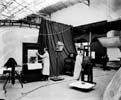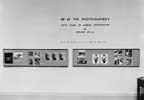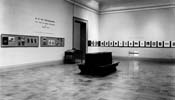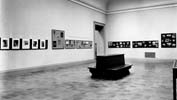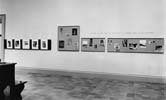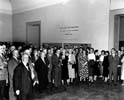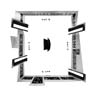The Metropolitan Museum of Edward Milla was initially conceived in 1999 when I received a phone call from the archivist at the Metropolitan Museum of Art, New York. The grandchildren of former Met chief photographer, Edward Milla, had recently been at the museum to show her a box of Met memorabilia that they had just discovered in the apartment of their deceased father (the son of Edward Milla). As I had done previous research at the museum on relationships between museums and their use of photography she called me to let me know. I contacted Milla's family and arranged to view the material.
The box of ephemera that Edward Milla (1888 – 1959) had brought home from the museum on the day he retired in 1953 contained a set of installation photographs of an exhibition that he had at the museum in 1951. Further research revealed that Milla had been offered the honour of showing in a public gallery at the Met (apparently the first and last museum employee to receive such an honour) on the occassion of his 50th year at the museum. He had begun work there in 1902 at the age of thirteen as an "umbrella boy."
Milla's exhibition, titled Up At The Photographer's, appeared in what was then called Gallery B-13 for sixteen days from May 18 to June 2, 1951. In this exhibition Milla summed up a lifetime of work at the museum. Milla's work had essentially produced much the visual history of the Met for the first half of the 20th century.
Milla's exhibition included: demonstrations of photography technique; his favourite photographs of his favourite objects; museum employees at work (including the photographers themselves); and, images of the museum and its galleries at different times. He operated as a de facto curator and historian as he presented his summation of fifty years of experience at the museum.
